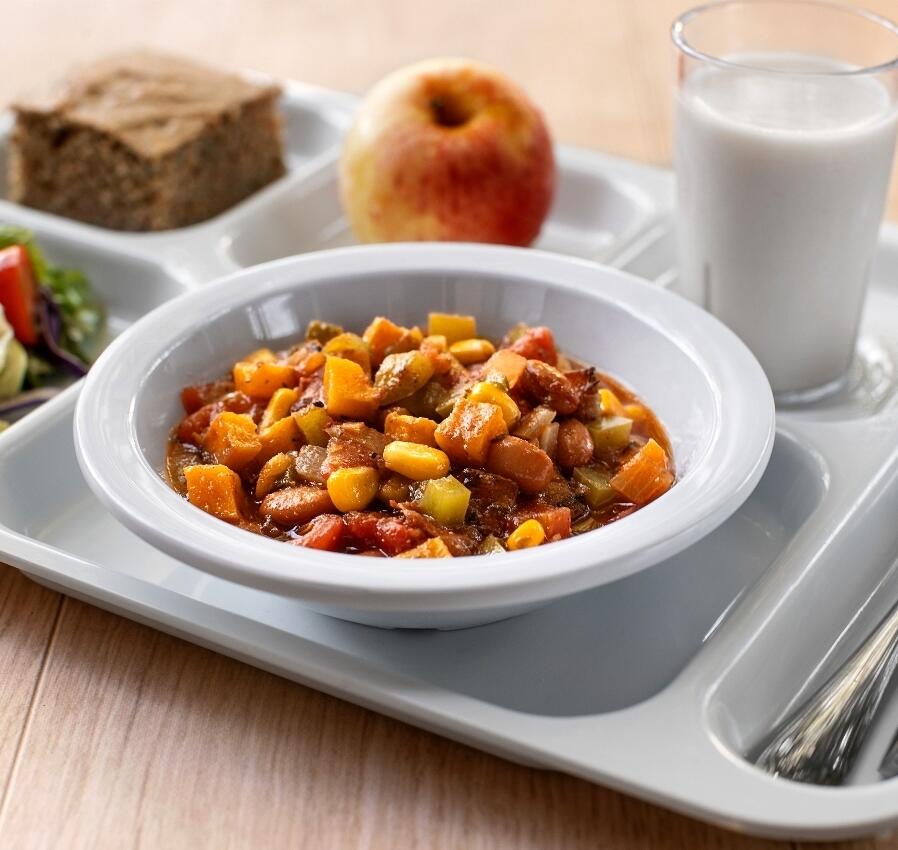
Serving up Indigenous School Recipes
January 28, 2022 | By Dani Chandler
We connected with Dyani Bingham, Project Manager at Rocky Mountain Tribal Leaders Council, to learn about the Indigenous Recipes Project, an initiative that will provide culturally-relevant meals for children within tribal communities and across the country.
The relationship between our heritage and the food on our plate is fundamental. Eating meals that represent our individualistic culture is not only comforting, but also provides a great opportunity for kids to learn about their heritage through food. To better connect with the impactful and vibrant Native American food culture, the Chef Ann Foundation (CAF) has partnered with the Rocky Mountain Tribal Leaders Council (RMTLC) to create K12-specific, kid-approved recipes through the Indigenous Recipes Project. This initiative will generate traditional Native recipes (which will be available for free on The Lunchbox) to provide culturally-relevant meals for children within tribal communities and across the country.
The Indigenous Recipes Project was born over a year ago when the council contacted CAF to use School Food Institute courses for many of the school food professionals throughout their communities. During the initial conversations and collaboration, we found a unique opportunity to create culturally relevant recipes that could be shared and celebrated through the tribal communities. As a national community of school food professionals, we strive to ensure all children have access to nutritious food that nourishes their growing bodies—all while embracing diverse cultural customs and cuisines.
Together, CAF and RMTLC have developed 6 USDA-compliant school food recipes based on traditional recipes from the tribal communities and regions including a Bison-Mac Bowl and Three Sisters Stew. (Stay tuned for the release of the full recipes! Sign up for our blog alerts to be alerted when the recipes are ready.) Each recipe will be tested for flavor, appearance, and accuracy and is credited for nutritional guidelines by a school food registered dietitian. All recipes are compliant for the National School Lunch Program, kid friendly, accessible with average school kitchen equipment, and cost effective for school food programs.


Together, CAF and RMTLC have developed 6 USDA-compliant school food recipes based on traditional recipes from the tribal communities and regions including a Bison-Mac Bowl and Three Sisters Stew. (Stay tuned for the release of the full recipes! Sign up for our blog alerts to be alerted when the recipes are ready.) Each recipe will be tested for flavor, appearance, and accuracy and is credited for nutritional guidelines by a school food registered dietitian. All recipes are compliant for the National School Lunch Program, kid friendly, accessible with average school kitchen equipment, and cost effective for school food programs.
We connected with Dyani Bingham, Project Manager at Rocky Mountain Tribal Leaders Council, to learn more about the Indigenous Recipes Project and how these cultural foods will impact the school community.
Why is it so important to incorporate these traditional recipes into the school community?
Incorporating traditional recipes is part of the larger effort of Food Sovereignty that has been flourishing in Indian Country for the past decade (at least). Representation matters. Incorporating these recipes builds a sense of pride and joy when children see their cultural foods represented in their school cafeteria.
If any, what challenges have you faced throughout the process of creating this initiative?
The biggest challenge has been starting new initiatives in the midst of the pandemic. Staff are spread thin and wearing many hats. There has been a positive response to this initiative. It has the potential to plant the seed for systemic changes within school cafeterias for the health of our Native youth.
How did the team decide which recipes to include for this project?
The recipes are a reflection of the region and naturally rose to mind when we brainstormed recipes for this project. The ability to integrate healthier versions of ingredients was also important in the consideration of the recipes. We wanted the recipes to be fun, reflective of family and community, while also having the ability to go to scale within the cafeteria. The recipes also had a kind of inter-tribal quality to them because they are regional and there are different versions for different Tribes, but the essential elements are similar.
How do you think the kids within the communities will respond to seeing their native foods on the school menu?
I imagine the children responding positively and with lots of enthusiasm. I believe the efforts will bring a sense of security to the children. As they see and experience the recipes that remind them of their family and community within a school setting. When students feel seen and heard within a cultural context, it can be a positive catalyst for a better overall school experience. Additionally, these recipes are not only good for physical wellness, but spiritual, social, and mental wellness as well.
What most excites you about this initiative?
I am most excited to continue to build relationships and make connections within the schools. I am excited to see how the recipes take off and excited to see how the effort takes on a life of its own.
What’s one thing that you would want everyone to know about Native American foods and food culture?
One thing I want everyone to know about Native American foods and food culture is that it is incredibly diverse and nuanced. It is simple, yet complex. It unifies and brings us together as families and communities.
By supporting cultural differences through the Indigenous Recipes Project, we hope these efforts act as a catalyst for systemic change within school cafeterias. We are so grateful to both Bluestone Life and the Newman’s Own Foundation for supporting this initiative and moving the important work forward.







